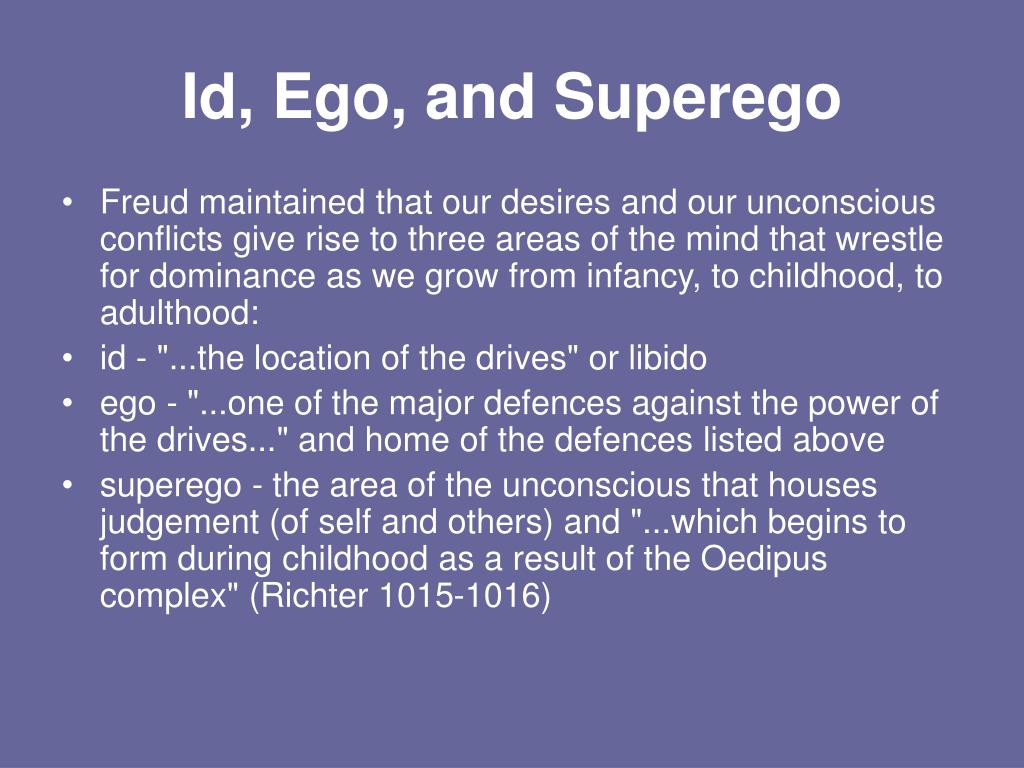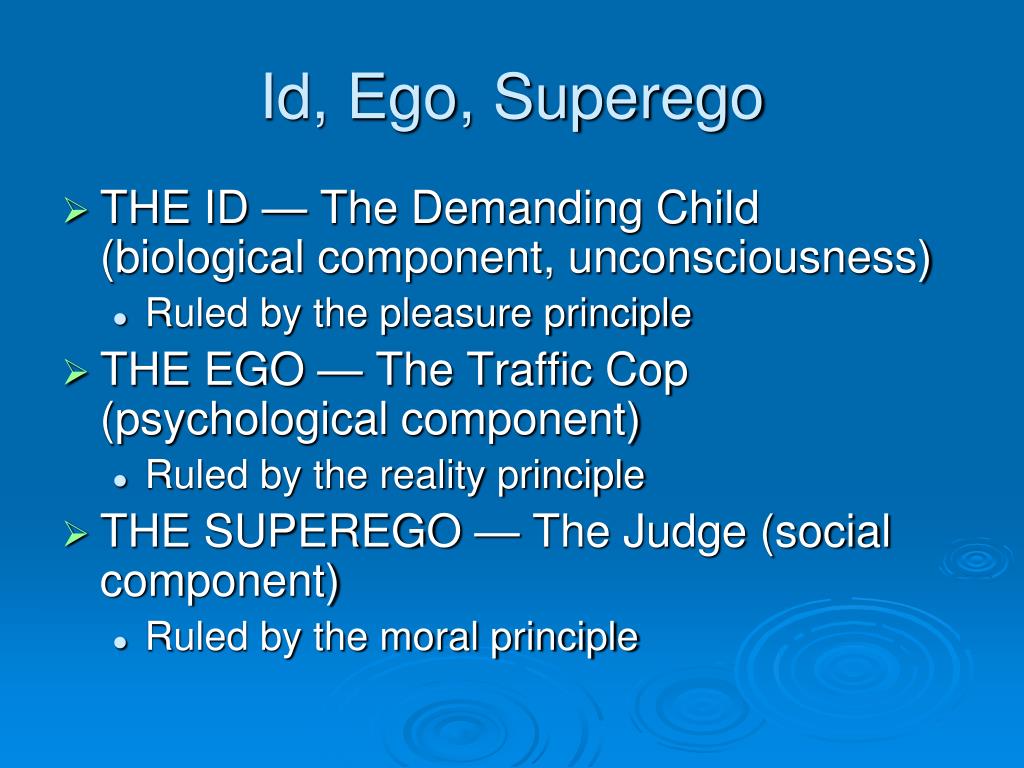

He later also postulated a death drive, which seeks "to lead organic life back into the inanimate state." For Freud, "the death instinct would thus seem to express itself-though probably only in part-as an instinct of destruction directed against the external world and other organisms" through aggression.

The psychic apparatus begins as an undifferentiated id, part of which then develops into a structured "ego", a concept of self that takes the principle of reality into account.įreud describes the id as "the great reservoir of libido", the energy of desire, usually conceived as sexual in nature, the life instincts that are constantly seeking a renewal of life. The id consists of the basic instinctual drives that are present at birth, inherent in the somatic organization, and governed only by the pleasure principle. nothing in the id which corresponds to the idea of time." The id "knows no judgements of value: no good and evil, no morality.Instinctual cathexes seeking discharge-that, in our view, is all there is in the id." ĭevelopmentally, the id precedes the ego. There is nothing in the id that could be compared with negation. It is oblivious to reason and the presumptions of ordinary conscious life: "contrary impulses exist side by side, without cancelling each other. It has no organization and no collective will: it is concerned only with satisfaction of drives in accordance with the pleasure principle. Our knowledge of it is limited to analysis of dreams and neurotic symptoms, and it can only be described in terms of its contrast with the ego. įreud described the id as "the dark, inaccessible part of our personality". The id acts according to the pleasure principle-the psychic force oriented to immediate gratification of impulse and desire.
Id ego superego example code#
The word ego is taken directly from Latin, where it is the nominative of the first person singular personal pronoun and is translated as "I myself" to express emphasis.įigures like Bruno Bettelheim have criticized the way "the English translations impeded students' efforts to gain a true understanding of Freud" by substituting the formalised language of the elaborated code for the quotidian immediacy of Freud's own language.įreud conceived the id as the unconscious instinctual component of personality that is present at birth, the source of bodily needs and wants, emotional impulses and desires, especially aggression and the sexual drive.

The term " das Es" was originally used by Georg Groddeck, a physician whose unconventional ideas were of interest to Freud (Groddeck's translators render the term in English as "the It"). Thus, to the German reader, Freud's original terms are to some degree self-explanatory. Freud himself wrote of " das Es", " das Ich", and " das Über-Ich" -respectively, "the It", "the I", and "the Over-I". The terms "id", "ego", and "super-ego" are not Freud's own they are latinisations by his translator James Strachey. He elaborated, refined, and formalised that model in the essay The Ego and the Id (1923). The ego is thus "in the habit of transforming the id's will into action, as if it were its own." įreud introduced the structural model (id, ego, super-ego) in the essay Beyond the Pleasure Principle (1920) in response to the unstructured ambiguity and conflicting uses of the term "the unconscious mind". In the ego psychology model of the psyche, the id is the set of uncoordinated instinctual desires the super-ego plays the critical and moralizing role and the ego is the organized, realistic agent that mediates between the instinctual desires of the id and the critical super-ego Freud compared the ego (in its relation to the id) to a man on horseback: the rider must harness and direct the superior energy of his mount, and at times allow for a practicable satisfaction of its urges. The Latin terms id, ego and super-ego were chosen by his original translators and have remained in use. Freud himself used the German terms das Es, Ich, and Über-Ich, which literally translate as "the it", "I", and "over-I". The three agents are theoretical constructs that Freud employed to describe the basic structure of mental life as it was encountered in psychoanalytic practice. In psychoanalytic theory, the id, ego, and super-ego are three distinct, interacting agents in the psychic apparatus, defined in Sigmund Freud's structural model of the psyche.


 0 kommentar(er)
0 kommentar(er)
